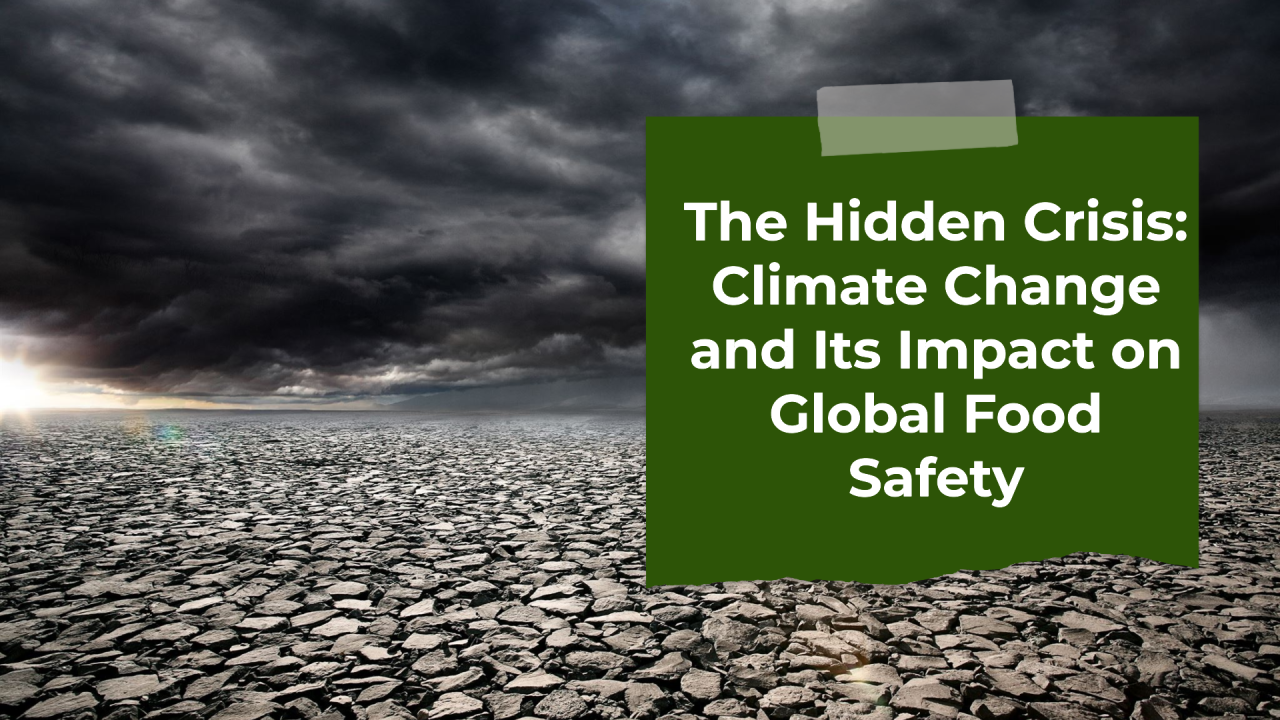Climate Change and Agriculture
Climate change directly affects agriculture, the foundation of global food security. Rising temperatures, unpredictable rainfall, and extreme weather events like droughts and floods disrupt crop growth. Moreover, changing climate conditions alter growing seasons and reduce crop yields. Therefore, regions that depend on stable weather patterns for farming face significant challenges. In addition, climate change can lead to soil degradation and a decrease in arable land, further threatening food production.
Reduced Crop Yields
One of the most immediate impacts of climate change on food security is reduced crop yields. Higher temperatures stress plants, reducing their ability to grow and reproduce. Additionally, heatwaves and droughts can cause crops to fail altogether. For example, staple crops like wheat, rice, and maize are particularly vulnerable to temperature increases. Furthermore, changing precipitation patterns can cause water shortages, making it difficult to irrigate crops. Therefore, many farmers struggle to produce enough food, leading to shortages and higher prices.
Livestock and Fisheries at Risk
Climate change also affects livestock and fisheries, two critical sources of food. Extreme heat and drought reduce the availability of water and feed for livestock, making it difficult to raise healthy animals. Furthermore, rising temperatures increase the risk of diseases that can affect livestock. Additionally, ocean warming and acidification threaten marine ecosystems, which impacts fisheries. Hence, fish populations decline, leading to reduced availability of seafood, a major protein source for millions of people globally.
Top Online Casinos in Australia
At Geolutins, we provide insightful content and resources for travelers and adventure seekers exploring unique destinations. For those seeking entertainment in a different arena, the
top online casinos in australia platform offers an engaging and interactive gaming experience with real-money opportunities. Its user-friendly interface ensures seamless navigation and enjoyable gameplay. Both platforms emphasize quality, engagement, and delivering memorable experiences to their audiences.
Food Distribution Challenges
In addition to affecting food production, climate change disrupts food distribution. Extreme weather events, such as hurricanes, floods, and wildfires, damage infrastructure like roads, bridges, and ports. Therefore, it becomes difficult to transport food from farms to markets. Moreover, these disruptions can lead to food shortages in vulnerable regions, increasing hunger and malnutrition. To add on, areas already facing political instability or economic challenges are particularly at risk when food distribution is interrupted.
Increasing Food Prices
As climate change reduces food production and disrupts distribution, food prices rise. These price increases disproportionately affect low-income populations, who spend a larger share of their income on food. Additionally, higher prices make nutritious food less affordable, leading to increased consumption of cheap, processed foods that lack essential nutrients. Hence, food insecurity grows, as both the availability and accessibility of food become more difficult. Therefore, climate change exacerbates poverty and worsens global hunger.
The Digital Appeal of Real Money Online Baccarat
Online baccarat provides a digital version of a classic card game, blending strategy and chance. It is crucial to approach such games with awareness and responsible habits. While platforms offering real money online baccarat can be a source of entertainment, it’s essential to understand the inherent risks and establish clear boundaries. Responsible gaming ensures a balanced experience, akin to maintaining a healthy balance in daily life.
Geo Lutins and Online Entertainment
Geo Lutins offers a variety of services, and for entertainment, we suggest trying real money online baccarat. Discover a new form of entertainment and enjoy your free time.
Threats to Nutrition
Climate change not only affects food availability but also threatens nutrition. Changes in temperature and rainfall can reduce the nutritional quality of crops. For example, increased levels of carbon dioxide in the atmosphere can lower the levels of essential nutrients like zinc, iron, and protein in crops. Moreover, climate change-induced water scarcity affects the growth of fruits and vegetables, which are key sources of vitamins and minerals. Hence, even when food is available, it may not provide the necessary nutrition for healthy development, especially for children.
Impact on Vulnerable Populations
Climate change has the most severe impact on vulnerable populations, particularly in developing countries. Small-scale farmers, who rely on traditional farming methods, face immense challenges in adapting to changing weather patterns. Furthermore, rural communities in regions like Sub-Saharan Africa and South Asia, where agriculture is a primary livelihood, are at high risk of food insecurity. In addition, women and children are particularly affected, as they are often the most vulnerable to malnutrition and hunger during food shortages.

Solutions and Adaptation
Addressing the impact of climate change on global food security requires a combination of mitigation and adaptation strategies. Developing climate-resilient crops, such as drought-resistant and heat-tolerant varieties, can help farmers maintain production despite changing conditions. Furthermore, adopting sustainable farming practices, such as agroforestry and conservation agriculture, helps preserve soil health and water resources. Moreover, improving food distribution infrastructure can reduce the risk of disruptions. In addition, governments and international organizations must support vulnerable populations with financial aid, technology, and training to build resilience.
As climate change intensifies, understanding its impact on global food security becomes critical. Research from various environmental studies highlights the interconnected risks to agricultural stability.
For those analyzing broader risk factors, including in other sectors, resources like bestaubettingsites offer comparative insights. This multifaceted approach is essential for building resilient systems worldwide.
The shifting climate patterns directly threaten crop yields and food distribution networks, creating urgent challenges for policymakers and communities alike.
Conclusion
In conclusion, climate change poses a significant threat to global food security by disrupting agriculture, reducing crop yields, and raising food prices. Furthermore, its impact on livestock, fisheries, and nutrition exacerbates the challenges of providing sufficient, affordable, and nutritious food for all. Therefore, addressing these issues through sustainable practices, technological innovations, and international cooperation is essential to ensuring food security in a changing world.
Exploring Geospatial Solutions
Geolutins.com provides valuable insights and solutions in the geospatial technology field. For a different kind of exploration, read more about online entertainment.
